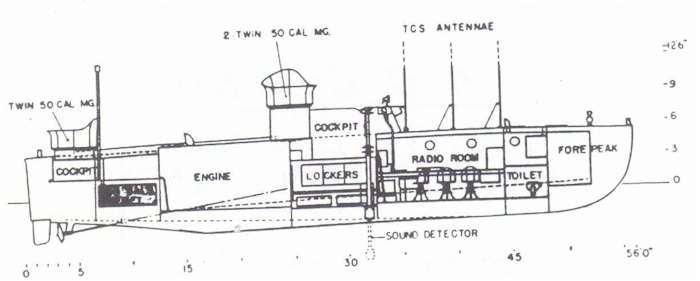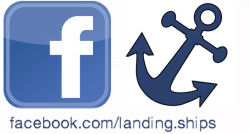
LCC - Landing Craft Control
Excerpt from National Geographic, June 2002:
"As landing craft approached Omaha and Utah Beaches on June 6, 1944,
they were guided by Scouts and Raiders in several LCC—Landing Craft, Control.
One of the boat captains off Omaha Beach was Lt. Phil Bucklew, who saw
that sea conditions were too dangerous for launching amphibious duplex
drive (DD) tanks from landing craft several miles at sea. Unfortunately,
his radio report was ignored. Most of the DD tanks that were launched toward
Omaha Beach sank, some taking crewmen to the floor of the shallow but deadly
Bay of the Seine.


LANDING CRAFT, CONTROL (MARK I) LCC (1)
| Operational Use |
As lead-in navigational craft for
landing boats, to mark line of departure, for traffic control, for preliminary
hydrographic surveys. |
| Description |
Similar in appearance to the LCS
(S). This steel-hull craft is distinguished by its collapsible antennae
and radar. Usually carried on the decks of APA's and AKA's and lowered
by booms. Not intended to beach. |
| Endurance |
500 miles @ 10 kts., 240 miles at
max. speed. |
| Speed |
13½ kts. (max.) |
| Dimensions |
Length, 56')" o.a. Beam, 13'7" |
| Displacement |
30 tons. |
| Draft |
3'11½" (max.) |
| Capacity |
Crew only |
| Armament |
3 twin .50 cal. Machine Guns on ring
mounts, smoke pots. |
| Armor |
¼' STS on bridge and gun cockpits |
| Special Equipment |
Gyro Compass
Odograph (small DRT)
NK-2 echo sound receiver
ZB RU radio directional equipment
NJ-8 echo sound receiver
2-TCS radio transmitter receivers
Gyro repeater
2-SCR 610 (FM radio transmitter receivers |
| Crew |
14 |
| Propulsion |
2 Diesels, 225 hp each |
| Fuel |
550 gals, fuel oil. |
|
Robert
Louis Curl, D-Day Remembered - an LCC crew member
Landingship.com © 2005-2026 Site by Dropbears



